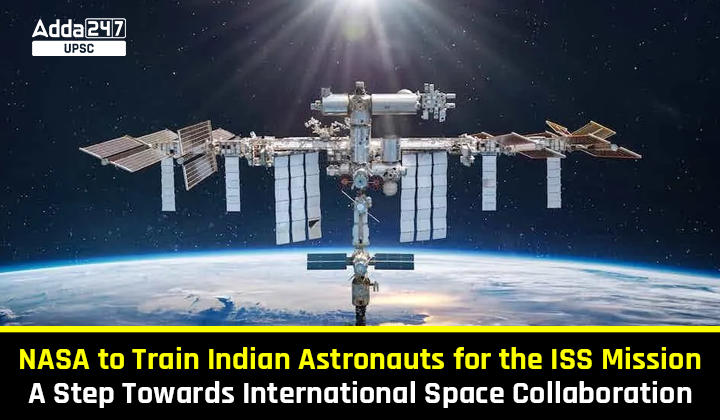Table of Contents
In a significant development for space exploration and international cooperation, NASA, the United States space agency, has announced its plan to train an Indian astronaut for a mission to the International Space Station (ISS) by the end of 2024. The announcement, made by NASA Administrator Bill Nelson during his visit to Delhi, ushers in a new era of American and Indian space cooperation. India is poised to become a “great future partner” in space exploration, with the United States expressing openness to collaborating on an Indian Space Station. This article delves into the intricacies of this collaboration, the ISS, and India’s ambitious space goals.
International Space Station (ISS)
History and Significance: The ISS, a symbol of international collaboration in space, has been orbiting Earth since 1998. It serves as a space environment research laboratory where scientific research is conducted in astrobiology, astronomy, meteorology, physics, and other fields.
Components and Structure: The ISS comprises pressurized modules for crew living quarters and laboratories, solar arrays for power, and trusses for structural support. It represents the combined efforts of multiple countries and space agencies, including NASA, Roscosmos (Russia), JAXA (Japan), ESA (Europe), and CSA (Canada).
The Importance of the ISS
Scientific and Technological Advancements: The ISS has been pivotal in advancing our understanding of space and its effects on the human body, as well as in developing technologies necessary for long-duration human and robotic exploration into deep space.
International Cooperation and Peace: It stands as a testament to what can be achieved when nations collaborate peacefully in the realm of science and exploration.
India’s Space Ambitions and Bharatiya Antariksha Station
Vision for 2035: India, under the direction of the Indian Space Research Organisation (ISRO), plans to build the Bharatiya Antariksha Station, an Indian Space Station, by 2035 as a result of its successful space missions. This project highlights India’s growing capabilities and ambitions in space technology.
Scope and Objectives: The proposed Indian Space Station will likely focus on specific missions and research beneficial to India, contributing to a better understanding of space and fostering technological advancements.
Global Space Station Endeavors
Countries with Space Stations: Apart from the ISS, several other countries have expressed interest in or are developing their own space stations. China’s Tiangong, Russia’s proposed replacement for the ISS segment, and India’s upcoming stations are notable examples.
The Future of Space Stations: The emergence of new space stations signifies a future where space exploration and inhabitation become more international and collaborative.
Training Indian Astronauts by NASA
Syllabus and preparation: The training will encompass extensive preparation in areas like IT, space, computers, robotics, nanotechnology, biotechnology, and intellectual property rights, reflecting the comprehensive nature of modern space missions.
Impact and Opportunities: This collaboration opens up new avenues for Indian astronauts and scientists, enhancing India’s role in future space exploration.
Conclusion
The collaboration between NASA and India to train an Indian astronaut for the ISS mission is a monumental step in space exploration and international partnership. It not only signifies the growing capabilities and aspirations of India in space technology but also underscores the importance of global cooperation in conquering the final frontier. As the world watches on, this partnership may pave the way for more inclusive and collaborative space endeavors, ultimately benefiting humanity’s quest to explore and understand the cosmos.



 TSPSC Group 1 Question Paper 2024, Downl...
TSPSC Group 1 Question Paper 2024, Downl...
 TSPSC Group 1 Answer key 2024 Out, Downl...
TSPSC Group 1 Answer key 2024 Out, Downl...
 UPSC Prelims 2024 Question Paper, Downlo...
UPSC Prelims 2024 Question Paper, Downlo...




